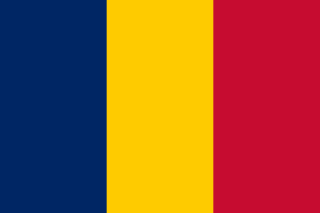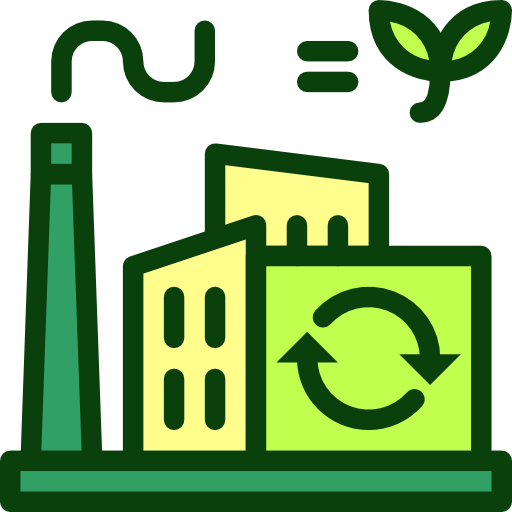Chad - Geography

Here, let us take a look at the Geography of Chad.
note 1: Chad is the largest of Africa's 16 landlocked countries
note 2: not long ago, geologically speaking, what is today the Sahara was green savannah teeming with wildlife; during the African Humid Period, roughly 11,000 to 5,000 years ago, a vibrant animal community, including elephants, giraffes, hippos, and antelope lived there; the last remnant of the "Green Sahara" exists in the Lakes of Ounianga (oo-nee-ahn-ga) in northern Chad, a series of 18 interconnected freshwater, saline, and hypersaline lakes now protected as a World Heritage site
note 3: Lake Chad, the most significant water body in the Sahel, is a remnant of a former inland sea, paleolake Mega-Chad; at its greatest extent, sometime before 5000 B.C., Lake Mega-Chad was the largest of four Saharan paleolakes that existed during the African Humid Period; it covered an area of about 400,000 sq km (150,000 sq mi), roughly the size of today's Caspian Sea
. Mother's mean age at first birth is 18.1 years (2014/15 est.) (Note: data represents median age at first birth among women 20-49), whereas, the Maternal mortality ratio is 1,063 deaths/100,000 live births (2020 est.)Geographical data of Chad
| Location | Central Africa, south of Libya |
|---|---|
| Geographic coordinates | 15 00 N, 19 00 E |
| Map references | Africa |
| Tarrain | broad, arid plains in center, desert in north, mountains in northwest, lowlands in south |
| Natural Resources | petroleum, uranium, natron, kaolin, fish (Lake Chad), gold, limestone, sand and gravel, salt |
| Natural Hazards | hot, dry, dusty harmattan winds occur in north; periodic droughts; locust plagues |
| Irrigated Land | 300 sq km (2012) |
| Major rivers (by length in km) | |
| Major aquifers | Lake Chad Basin, Nubian Aquifer System |
| Land Boundaries | 6,406 km |
| Border Countries | Cameroon 1,116 km; Central African Republic 1,556 km; Libya 1,050 km; Niger 1,196 km; Nigeria 85 km; Sudan 1,403 km |
| Coastline | 0 km (landlocked) |
| Climate | tropical in south, desert in north |
| Area | |
| Total Area | |
| Land Area | 1,259,200 sq km |
| Water Area | 24,800 sq km |
| comparative Area | almost nine times the size of New York state; slightly more than three times the size of California |
| Maritime Claims | |
| Elevations | |
| Highest point | Emi Koussi 3,445 m |
| Lowest point | Djourab 160 m |
| Mean elevation | 543 m |
| Land Use | |
| Agricultural land | 40% (2022 est.) |
| Agricultural land: arable land | arable land: 4.2% (2022 est.) |
| Agricultural land: permanent crops | permanent crops: 0% (2022 est.) |
| Agricultural land: permanent pasture | permanent pasture: 35.7% (2022 est.) |
| Forest | 3.2% (2022 est.) |
| Other | 56.8% (2022 est.) |
Population Distribution
The population is unevenly distributed due to contrasts in climate and physical geography; the highest density is found in the southwest, particularly around Lake Chad and points south; the dry Saharan zone to the north is the least densely populated as shown in this population distribution map
People and Society
In Chad, the different Ethnic groups are such that we have: Sara (Ngambaye/Sara/Madjingaye/Mbaye) 30.5%, Kanembu/Bornu/Buduma 9.8%, Arab 9.7%, Wadai/Maba/Masalit/Mimi 7%, Gorane 5.8%, Masa/Musseye/Musgum 4.9%, Bulala/Medogo/Kuka 3.7%, Marba/Lele/Mesme 3.5%, Mundang 2.7%, Bidiyo/Migaama/Kenga/Dangleat 2.5%, Dadjo/Kibet/Muro 2.4%, Tupuri/Kera 2%, Gabri/Kabalaye/Nanchere/Somrai 2%, Fulani/Fulbe/Bodore 1.8%, Karo/Zime/Peve 1.3%, Baguirmi/Barma 1.2%, Zaghawa/Bideyat/Kobe 1.1%, Tama/Assongori/Mararit 1.1%, Mesmedje/Massalat/Kadjakse 0.8%, other 4.6%, unspecified 1.7% (2014-15 est.)
| Population | |
|---|---|
| Pop growth rate | 3.01% (2024 est.) |
| Birth rate | 39.2 births/1,000 population (2024 est.) |
| Death rate | 9 deaths/1,000 population (2024 est.) |
| Health expenditure | 5.2% of GDP (2021) |
| Physicians Density | |
| Hospital bed Density | |
| Total fertility rate | 5.24 children born/woman (2024 est.) |
| Gross reproduction rate | 2.57 (2024 est.) |
| Contraceptive prevalence rate | 8.1% (2019) |
| Est married women (ages 15-49) | 70.6% (2023 est.) |
| Literacy | age 15 and over can read and write French or Arabic |
| Education expenditures | 2.9% of GDP (2021 est.) |
| Net Migration rate | -0.1 migrant(s)/1,000 population (2024 est.) |
| Nationality | Chadian | Chadian(s) |
| Languages | |
| Religions | Muslim 52.1%, Protestant 23.9%, Roman Catholic 20%, animist 0.3%, other Christian 0.2%, none 2.8%, unspecified 0.7% (2014-15 est.) |
| Age Structure | |
| 0-14 years | 45.8% (male 4,428,132/female 4,323,398) |
| 15-64 years | 51.7% (male 4,831,744/female 5,031,383) |
| 65 years and over | 2.5% (2024 est.) (male 204,823/female 274,115) |
| Dependency Ratios | |
| Total dependency ratio | 98.7 |
| Youth dependency ratio | 94.7 |
| Elderly dependency ratio | 4 |
| Potential support ratio | 24.9 (2021 est.) |
| Median Age | |
| Total | 16.7 years (2024 est.) |
| Male | 16.3 years |
| Female | 17.2 years |
| Urbanization | |
| Urban population | 24.4% of total population (2023) |
| Rate of urbanization | 4.1% annual rate of change (2020-25 est.) |
| Major urban areas (Pop) | 1.592 million N'DJAMENA (capital) (2023). |
| Sex Ratio | |
| At birth | 1.04 male(s)/female |
| 0-14 years | 1.02 male(s)/female |
| 15-64 years | 0.96 male(s)/female |
| 65 years and over | 0.75 male(s)/female |
| Total population | 0.98 male(s)/female (2024 est.) |
| Infant Motality | |
| Total | 62.5 deaths/1,000 live births (2024 est.) |
| Male | 68.1 deaths/1,000 live births |
| Female | 56.7 deaths/1,000 live births |
| Life Expectancy at birth | |
| Total population | 60 years (2024 est.) |
| Male | 58.1 years |
| Female | 62 years |
| Drinking Water Sources | |
| Improved: urban | urban: 90.2% of population |
| Improved: rural | rural: 51.9% of population |
| Improved: total | total: 60.9% of population |
| Unimproved: urban | urban: 9.8% of population |
| Unimproved: rural | rural: 48.1% of population |
| Unimproved: total | total: 39.1% of population (2020 est.) |
| Sanitation facility acess | |
| Improved: urban | urban: 57.5% of population |
| Improved: rural | rural: 4.9% of population |
| Improved: total | total: 17.3% of population |
| Unimproved: urban | urban: 42.5% of population |
| Unimproved: rural | rural: 95.1% of population |
| Unimproved: total | total: 82.7% of population (2020 est.) |
| Alcohol consumption per capita | |
| Total | 0.55 liters of pure alcohol (2019 est.) |
| Beer | 0.37 liters of pure alcohol (2019 est.) |
| Wine | 0.01 liters of pure alcohol (2019 est.) |
| Spirits | 0.01 liters of pure alcohol (2019 est.) |
| Other alcohols | 0.16 liters of pure alcohol (2019 est.) |
| Tobacco use | |
| Total | 8.3% (2020 est.) |
| Male | 13.8% (2020 est.) |
| Female | 2.7% (2020 est.) |
| Child marriage | |
| Women married by age 15 | 24.2% |
| Women married by age 18 | 60.6% |
| Men married by age 18 | 8.1% (2019 est.) |
Demographic profile
All Important Facts about Chad
Want to know more about Chad? Check all different factbooks for Chad below.









